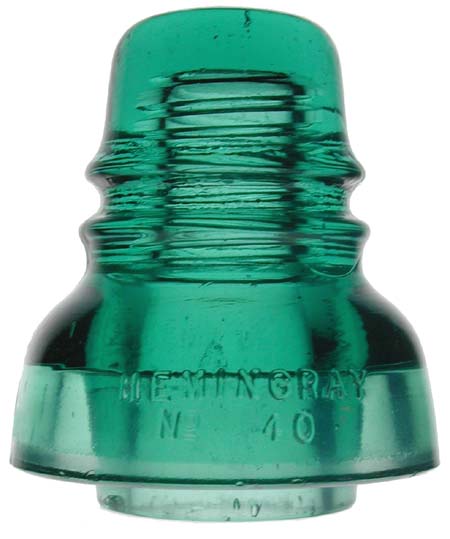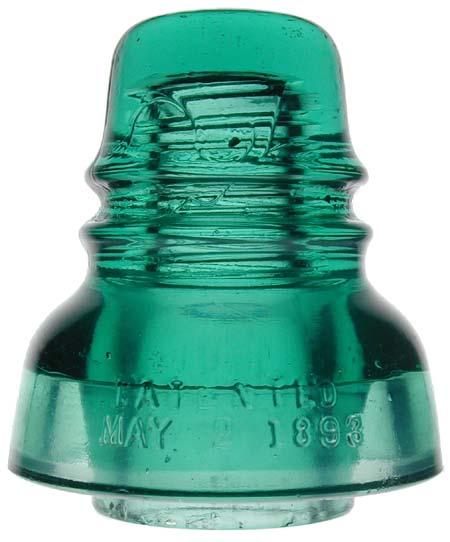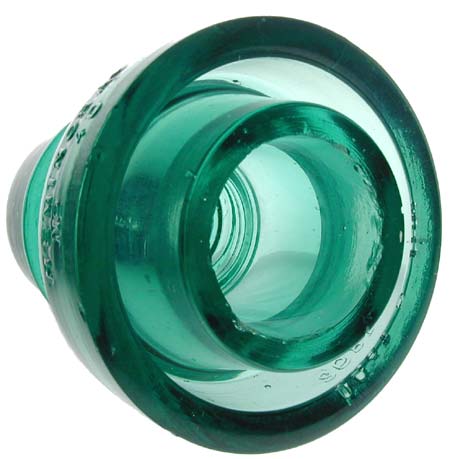


Reporter: Bill Meier
First, a little history... In the early 1990's a CD 152 with an extended inner skirt was found in Western Pennsylvania. At the time, not too much was thought of it, and it was listed as a regular CD 152 with a note {Inner skirt is extended about 1/2”}. In early 2000, a second one was found, also from Western Pennsylvania. Upon close examination, one can tell they were both made from the same mold. This insulator has a number of interesting characteristics:
It has a smooth base
In addition to having a smooth base, it also has the MAY 2
1893 drip point patent, making it one of a small handful of Hemingrays that
has a smooth base with the drip point patent
The inner skirt is extended down about 3/8"
The inner skirt is very heavy and thick, and has a flat base
Photos of the front, back and bottom are shown below.



Note how thick the inner skirt is. It is nearly the thickness of the outer skirt. In addition, the bottom of the inner skirt is very flat, and forms nearly a 90 degree angle with the inside and outside edges of this skirt which is also unusual.
In December 2006, both of these pieces were sent to Mr. N. R. Woodward with a simple note saying "I think you might be interested in seeing these two pieces". Indeed he was! He assigned this extended skirt CD 152 a new CD number, CD 152.2. This is consistent with several other insulators that have been assigned a point .1 number because of the presence of a significantly extended inner skirt.
It was asked why it was not assigned a 152.1 instead, and his reply was "In the case of this No. 40, we have a big chunk of glass that in no way resembles the usual inner skirt."
He also commented "They are from the same mold and almost certainly were made on a hand press. But why they were made, we may never know. The design doesn't make much sense. If someone wanted an extended inner skirt, it could have been achieved without using such a heavy bit of glass."
As mentioned, both insulators were found in Western Pennsylvania. Mr. Woodward's thoughts on this were "If they come from Western Pennsylvania they very likely were used on the Pennsylvania RR. They used a pin about 2 inches taller than standard. That would allow plenty of clearance between insulator and crossarm; but that wouldn't explain why. As for the PRR, I suspect the reason for the taller pins they used was to avoid the building up of wet snow between the crossarm and the insulator base during storms."
To date, only two specimens are known exist. Both reside in the Hemingray collection of Bill & Jill Meier (they purchased the second one as an upgrade to the first), and both insulators were purchased from Dick Bowman.
If you ever thought the CD 152 Hemingray No 40 was boring, this should spice things up a little!
![]() Return
to the Insulator News page
Return
to the Insulator News page
If you have questions or comments, please use this Feedback Form.
Written Sunday, March 17, 2007